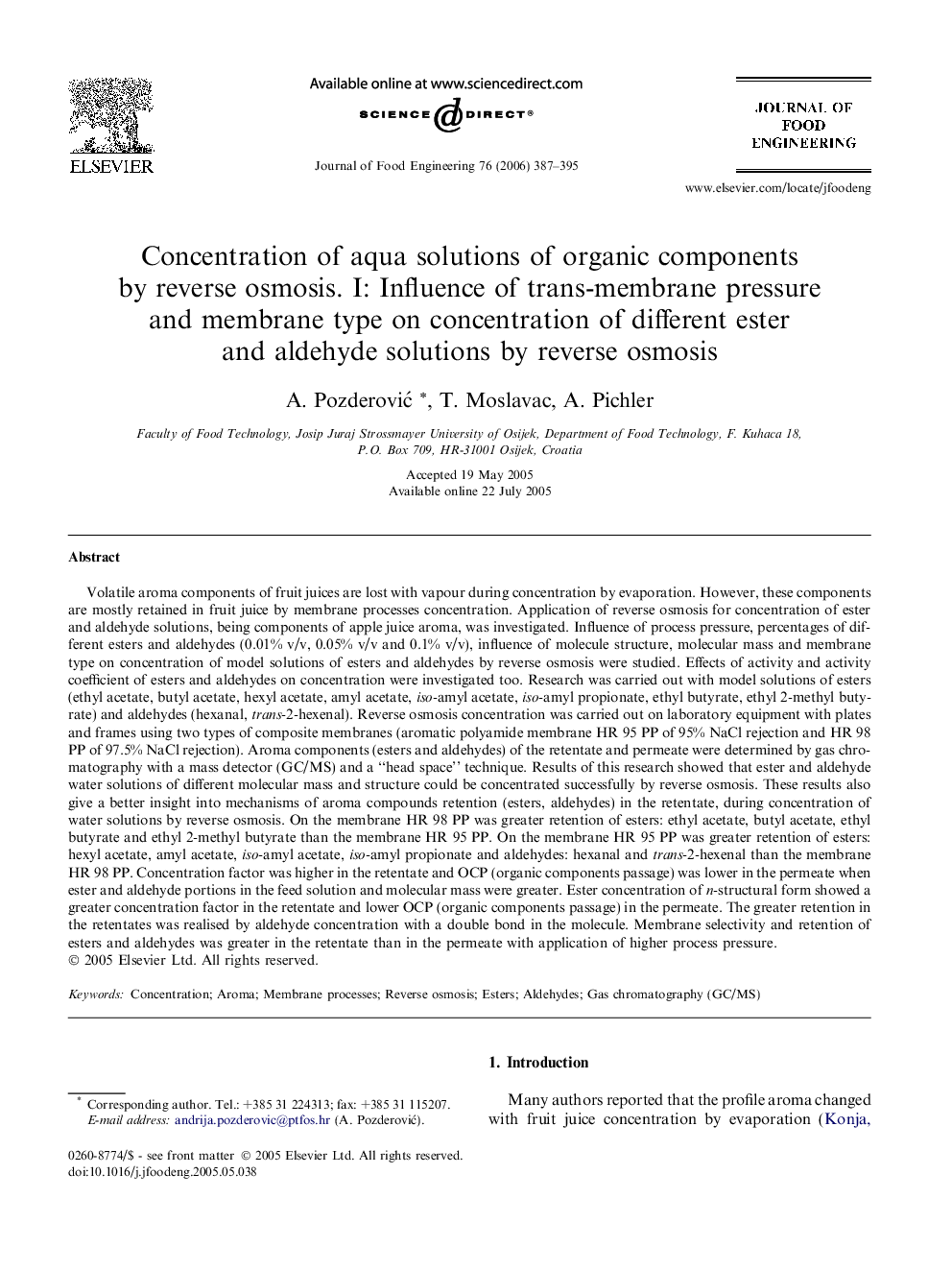| Article ID | Journal | Published Year | Pages | File Type |
|---|---|---|---|---|
| 226232 | Journal of Food Engineering | 2006 | 9 Pages |
Volatile aroma components of fruit juices are lost with vapour during concentration by evaporation. However, these components are mostly retained in fruit juice by membrane processes concentration. Application of reverse osmosis for concentration of ester and aldehyde solutions, being components of apple juice aroma, was investigated. Influence of process pressure, percentages of different esters and aldehydes (0.01% v/v, 0.05% v/v and 0.1% v/v), influence of molecule structure, molecular mass and membrane type on concentration of model solutions of esters and aldehydes by reverse osmosis were studied. Effects of activity and activity coefficient of esters and aldehydes on concentration were investigated too. Research was carried out with model solutions of esters (ethyl acetate, butyl acetate, hexyl acetate, amyl acetate, iso-amyl acetate, iso-amyl propionate, ethyl butyrate, ethyl 2-methyl butyrate) and aldehydes (hexanal, trans-2-hexenal). Reverse osmosis concentration was carried out on laboratory equipment with plates and frames using two types of composite membranes (aromatic polyamide membrane HR 95 PP of 95% NaCl rejection and HR 98 PP of 97.5% NaCl rejection). Aroma components (esters and aldehydes) of the retentate and permeate were determined by gas chromatography with a mass detector (GC/MS) and a “head space” technique. Results of this research showed that ester and aldehyde water solutions of different molecular mass and structure could be concentrated successfully by reverse osmosis. These results also give a better insight into mechanisms of aroma compounds retention (esters, aldehydes) in the retentate, during concentration of water solutions by reverse osmosis. On the membrane HR 98 PP was greater retention of esters: ethyl acetate, butyl acetate, ethyl butyrate and ethyl 2-methyl butyrate than the membrane HR 95 PP. On the membrane HR 95 PP was greater retention of esters: hexyl acetate, amyl acetate, iso-amyl acetate, iso-amyl propionate and aldehydes: hexanal and trans-2-hexenal than the membrane HR 98 PP. Concentration factor was higher in the retentate and OCP (organic components passage) was lower in the permeate when ester and aldehyde portions in the feed solution and molecular mass were greater. Ester concentration of n-structural form showed a greater concentration factor in the retentate and lower OCP (organic components passage) in the permeate. The greater retention in the retentates was realised by aldehyde concentration with a double bond in the molecule. Membrane selectivity and retention of esters and aldehydes was greater in the retentate than in the permeate with application of higher process pressure.
